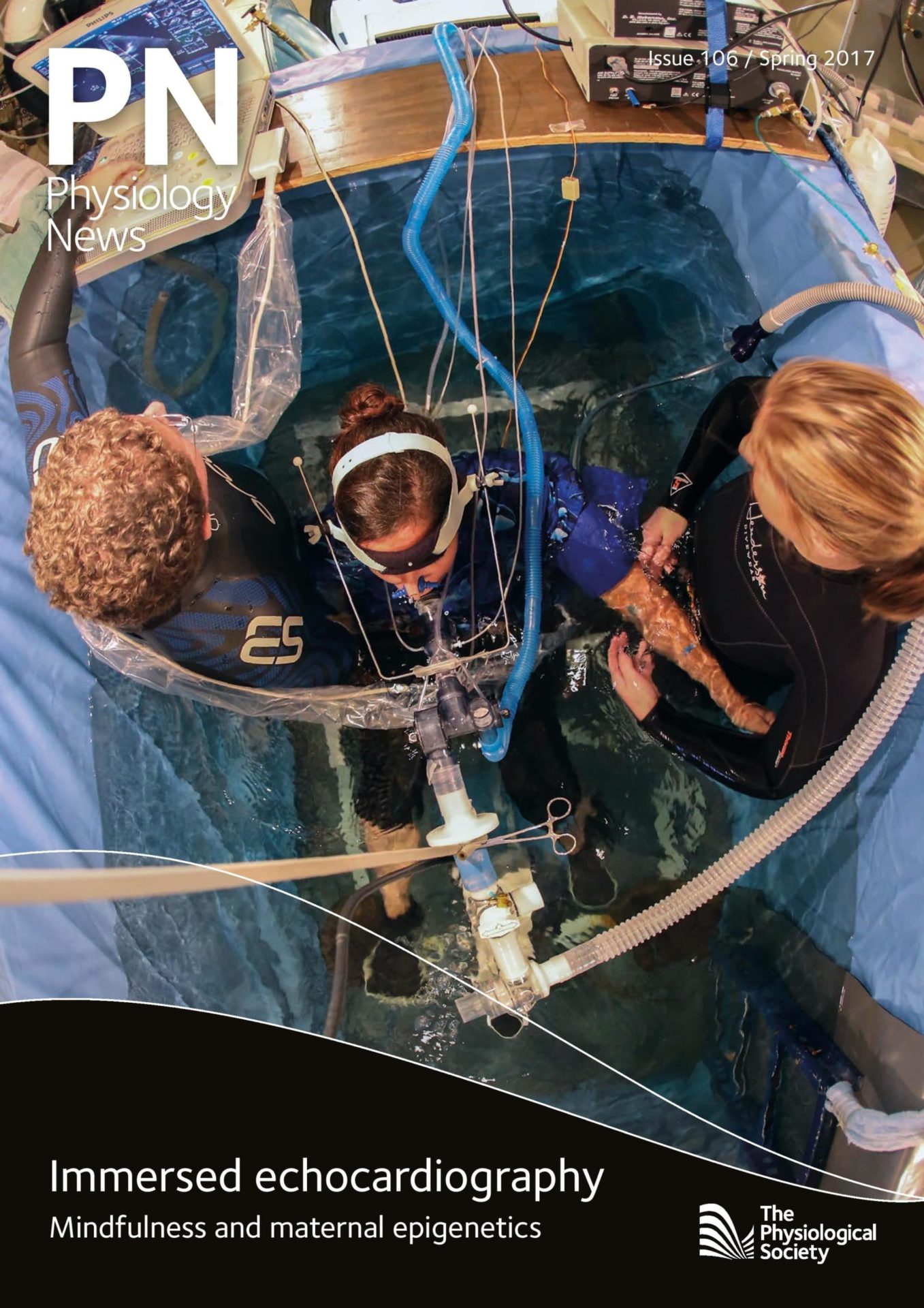
Physiology News Magazine
The Answers
Ask a physiologist: Your physiological questions answered
Letters to the Editor
The Answers
Ask a physiologist: Your physiological questions answered
Letters to the Editor
https://doi.org/10.36866/pn.106.7
How to survive extremes?
‘In the news recently a couple of mountain walkers and their dog were forced to spend the freezing night on top of a Scottish mountain. They luckily had bivvy bags. Even one for their dog. What is such a bag, and should all walkers carry one?’
Answer by MJT. The major routes of heat loss in a survival situation are evaporation and convection, and conduction/convection if it is very wet or you are laying down on cold ground. A bivvy bag (or bivouac sack) significantly reduces heat loss by providing a wind- and waterproof shelter thereby helping to maintain the insulation of the clothing/sleeping bag of the occupant. A mat helps reduce heat loss to the ground. The consequent reduction in heat loss can significantly extend survival time from hypothermia. Modern bivvy bags are ‘higher tech’ and include vapour-permeable membranes to keep the occupant dry (increases comfort and further reduces heat loss); but the big step forward comes from getting inside something that is wind- and waterproof. The advantage of a bivvy bag over a tent is that a bag is lighter, easier to pack (more likely to be carried) and can be used in situations where a tent cannot be pitched (limited space) or in severe weather conditions where it would be too difficult to pitch a tent. As such, bivvy bags are life-savers – don’t leave home without one! More info: http://bit.ly/2jmIpRp
Why should physiological media be bubbled with carbon dioxide gas mixtures?
Answer by RCT. A stable intracellular pH is essential for normal function. Nearly all the ionic mechanisms regulating intracellular pH require at least several mM of bicarbonate in the extracellular fluid. Human plasma normally has 24mM. At normal extracellular pH levels (around 7.4), a solution’s pH level is only stable if equilibrated with a gas mixture containing 5% carbon dioxide, depending slightly on the temperature. If the CO2 in the solution is allowed to equilibrate with room air the solution pH will slowly increase, calcium salts will precipitate and intracellular pH will also increase. This will happen in any kind of open dish, and even high levels of a buffer such as Hepes will only slow the pH increase. If your experiments require stable intracellular and extracellular pH you must include bicarbonate and CO2 in your solutions. For recent media recipes for culturing mammal neurons from the leading pH lab see Salameh, Hubner & Boron (2017) J Physiol 595.1 93–124.
After a long training run, should I have an ice bath or a sauna?
Answer by CJS. This is a hot topic. Post-exercise ice baths – or more generally cold water immersion (CWI) – is used to aid recovery and reduce pain and has been studied extensively. Radcliffe, Phelps and Murray have endorsed CWI: football teams, rugby players, weight-lifters and even dancers use it despite limited evidence that it is beneficial and suggestions that it may be counter-productive. We know that CWI is associated with ill-effects including arrhythmias and potentially heart attacks, and given how unpleasant it is, there seems little reason to recommend it even for high performance athletes.
Saunas are, however, the antithesis of CWI: few famous athletes recommend them but there is much evidence that they – or generally heat acclimation – provide aerobic benefits, are enjoyable, safe and offer other health benefits. Whilst there has been debate on whether heat acclimation always improves aerobic performance there are good physiological reasons to recommend it. Heat acclimation makes sweat glands bigger and reduces sodium loss. This is important during prolonged exercise, like marathon running, since it enables water to flow from the large intracellular fluid compartment into the plasma. This reduces the decline in blood volume that would otherwise limit marathon performance. An individual heat acclimation session or exercise bout causes a temporary (~24 hours) expansion of blood volume. By repeatedly exercising or heat acclimating slower adaptations can occur such as an increase in the pumping capacity of the heart (eccentric hypertrophy) required for fast endurance running. But, saunas or hot weather training are not the only way to heat acclimate – simply ‘over-dressing’ on your training runs will have the same effects. Now, where are my coats – I am off for a run to pump-up my blood volume amongst other things!
